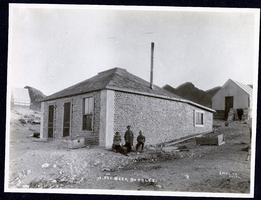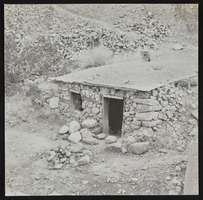Search the Special Collections and Archives Portal
Search Results

Photograph of children posing outside of house built of beer bottles, Tonopah (Nev.), 1902
Date
Archival Collection
Description
Caption: 10,000 Beer Bottles
Site Name: Peck's Bottle House (Tonopah, Nev.)
Image

Rendering of Amargosa Municipal Center: renderings (drawings)
Date
Archival Collection
Description
Artist's rendering of Amargosa Municipal Center, Amargosa, Nevada. The architect is Alton Dean Jensen.
Image

Miner's dugout along Gold Road: photographic print
Date
Archival Collection
Description
Image
Las Vegas High School Architectural Drawings
Identifier
Abstract
The Las Vegas High School architectural drawings include blueprints for various improvements, expansions, additions, and renovations performed for the Las Vegas, Nevada high school between 1929 and 1972. The architectural drawing sets include site plans, floor plans, elevations, sections, building component details, and structural drawings.
Archival Collection

Nanyu Tomiyasu interview, March 11, 1978: transcript
Date
Archival Collection
Description
On March 11, 1978, Sosuke Miyazawa interviewed Nanyu Tomiyasu (b. May 28, 1918 in Las Vegas, Nevada) about his family’s farm and their legacy as one of the pioneering families of the city. Tomiyasu begins by talking about what brought his family to Las Vegas, the city’s abundant water reservoir and his father’s farm. In particular, Tomiyasu discusses his father’s experiments with farming as one of the city’s early farmers, the transition into nursery farming and Japanese gardens. Moreover, he discusses his siblings, the local schools, their great quality, the successful students the city produced and the growth of school populations. Tomiyasu describes the large Japanese population and the Union Pacific Railroad that many of them worked on. He ends by discussing the change in architecture within the city, such as where old buildings stood and what they are used for now, the first Episcopal Church and the old Mormon Fort.
Text
